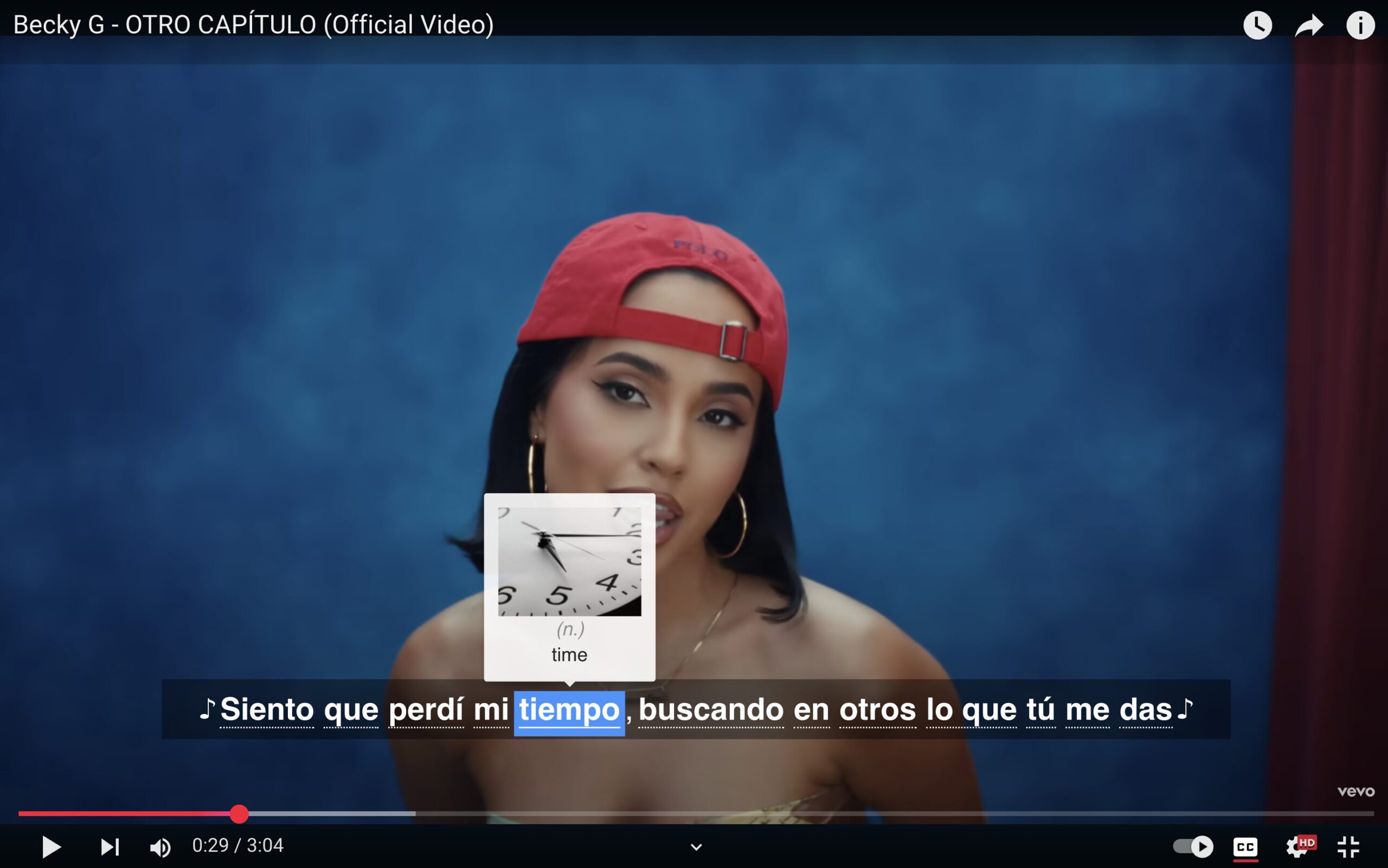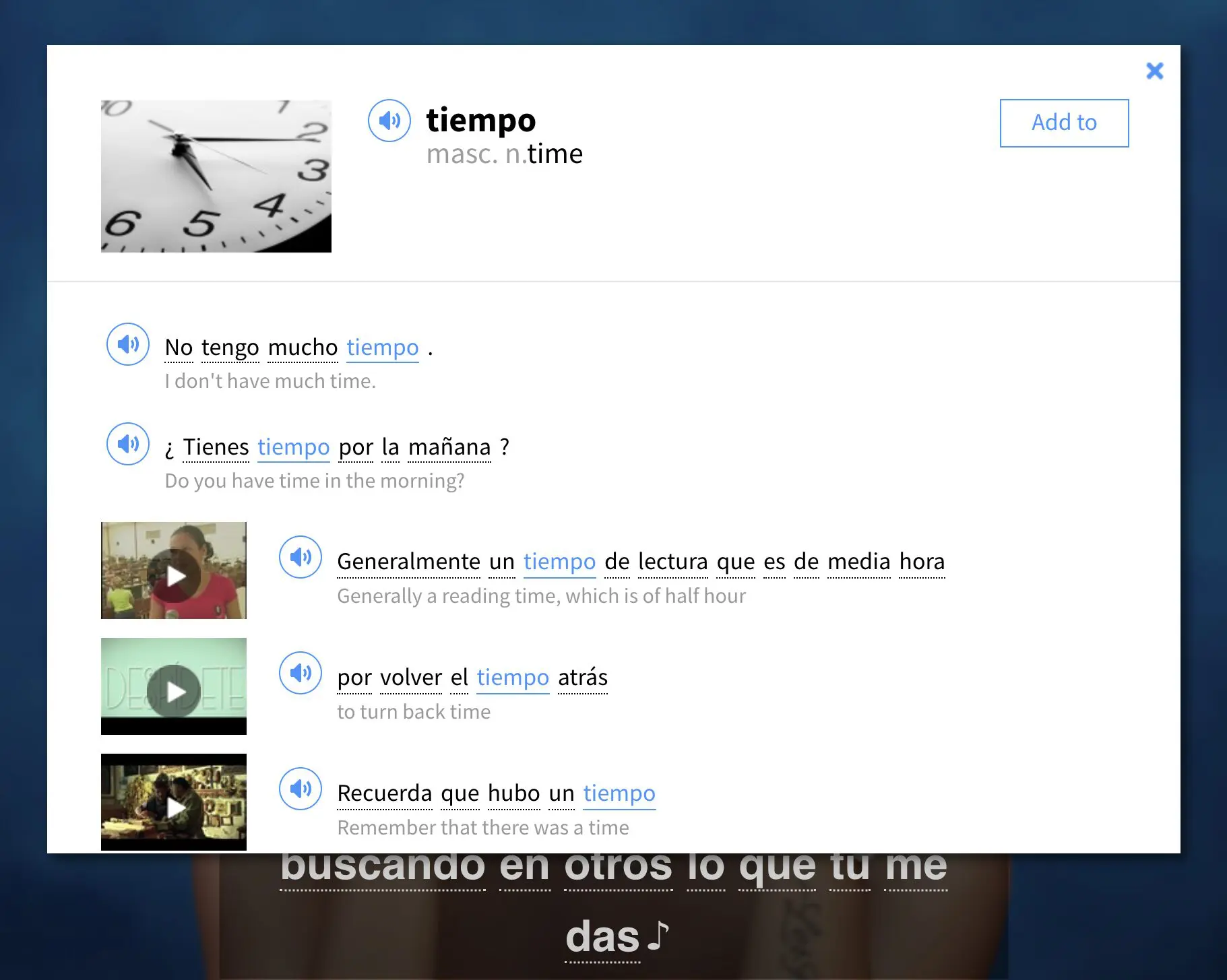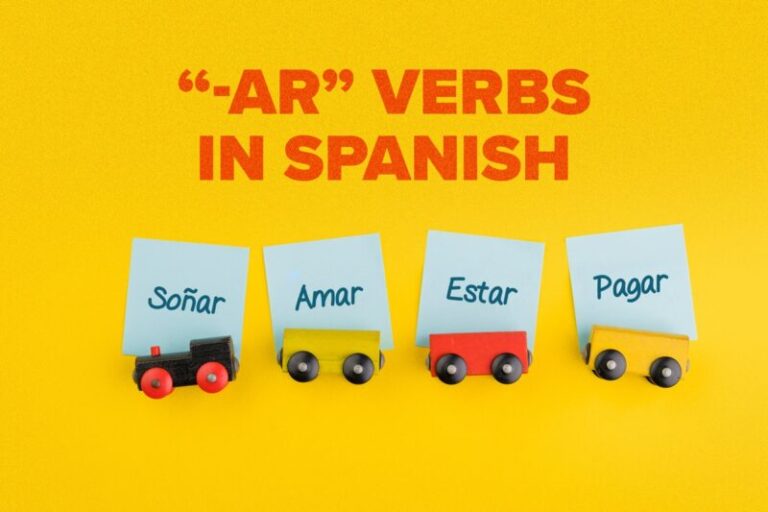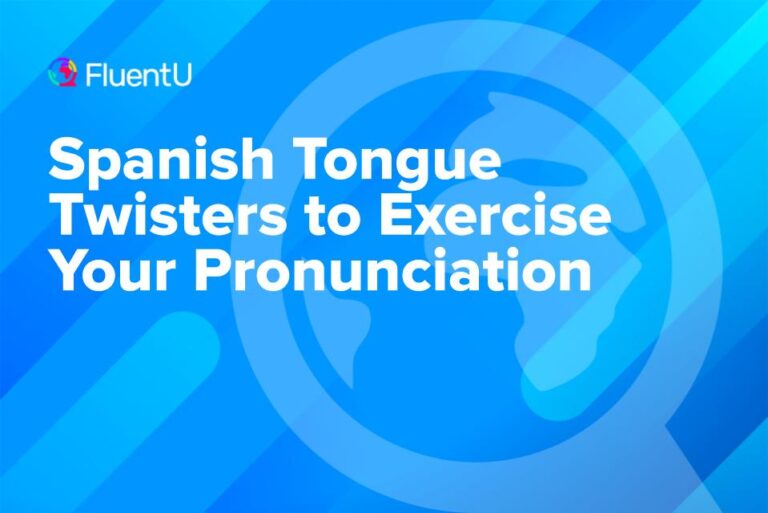How to Immerse Yourself in Spanish from Anywhere
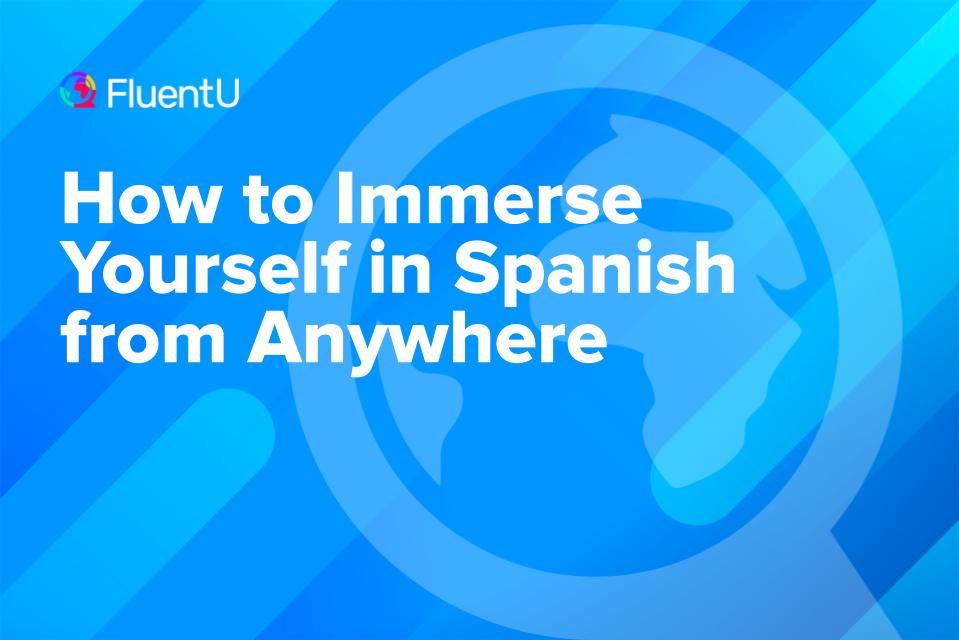
Spanish immersion is a natural (and very effective) way to learn the language, but not everyone can just hop on a plane and spend extended time in a Spanish-speaking country.
Fortunately, there are many ways to immerse yourself without needing to travel—or even leave your home. Read on to learn 16 effective methods to learn Spanish through immersion that I’ve used and that you can get started with today.
Contents
- 1. Write in Spanish Every Day
- 2. Change the Language on Your Electronic Devices
- 3. Use Social Media Exclusively in Spanish
- 4. Try Spanish Shadowing
- 5. Set a Time to Think in Spanish
- 6. Watch Spanish Movies and Series
- 7. Watch Authentic Spanish Videos
- Spanish Immersion from Your Device
- 8. Label Your House and Workplace
- 9. Listen to Spanish Radio, Podcasts and Audiobooks
- 10. Play Games in Spanish
- 11. Use Your Hobby as a Language Tool
- 12. Take Online Spanish Courses
- 13. Find a Language Exchange Partner
- 14. Hire a Language Tutor
- 15. Read Your Favorite Book in Spanish
- 16. Use Local Immersion Programs
- FAQs About Spanish Immersion
Download: This blog post is available as a convenient and portable PDF that you can take anywhere. Click here to get a copy. (Download)
1. Write in Spanish Every Day
Writing in a journal is an engaging exercise for the mind that can benefit your mental health—and your language learning!
Set aside time each day to write, and use it to jot down an interesting experience that happened to you that day, something you care about or something you’d like to remember.
You can use Word Reference or some other dictionary apps to help you get started.
Honestly, it doesn’t matter that much what you’re writing about, just as long as you’re doing it sincerely and putting some effort into it.
2. Change the Language on Your Electronic Devices
Here’s an easy but effective tip: Change your phone settings to Spanish. Every time you reach for it, you’ll be reading Spanish, and soon you’ll have learned plenty of new words without even noticing it.
Do the same with any other electronic device you use: your tablet, e-book reader…even your smart TV!
Next, try to set your computer’s regional settings to Spain or any Latin American country. You can even change your Windows or Mac system language to Spanish.
Finally, change the language settings on your internet browser so that the whole user experience is in Spanish.
3. Use Social Media Exclusively in Spanish
The first step to “socialize” in Spanish on social media is changing your profile’s language settings into Spanish. This should change the language of the whole interface and the notifications you receive.
The following list is by no means exhaustive, but it should give you an idea of how to make the most out of your social media time:
- Facebook: Search for pages and groups in Spanish on topics that interest you, like this super popular group for sharing recipes, or this one for sharing phrases about life.
- Twitter: There are literally millions of people you can follow who normally tweet in Spanish, from sportsmen and models to writers and politicians. You can find some ideas on who to follow in this article from Brandwatch. Find out more tips to learn Spanish with Twitter here.
- Instagram: Just like Twitter, you can use Instagram to follow native Spanish people or organizations who normally publish in Spanish, like the Spanish version of People magazine’s account.
- Reddit: The best way to use Reddit to get immersed in Spanish is to join subreddits in Spanish. There are subreddits for practically every topic under the sun.
- Pinterest: There are tons of pins for everything Spanish, from cute quotes to grammar rules and vocabulary lists.
- YouTube: Get Spanish immersion at home by watching videos created by and for native speakers. Head to the comments to read and write in the language, as well. Find some great Spanish channels here.
- Blogs and forums: Choose blogs written by native Spanish speakers on topics you’re interested in. Start with these nine must-read Spanish blogs.
4. Try Spanish Shadowing
Shadowing is a very popular and effective technique that consists of listening to native audio and repeating or parroting it, trying to imitate the original as best you can.
The two most common ways to shadow are repeating by just listening (also known as blind shadowing) and repeating while reading a transcript of what’s being said.
The creator of the method recommends starting to shadow only with the audio so you’ll be completely focused on listening and repeating. But you can also use transcripts to read along to as you listen.
The only requirement is that you use native Spanish audio, so practically any Spanish media can be transformed into a shadowing session.
I recommend you start with short, easy fragments of audio or video, like cartoons and other material created for children. For example, this video in which Pocoyó goes ice skating.
5. Set a Time to Think in Spanish
Thinking in Spanish can be pretty hard when you aren’t used to it, which is why you need to ease yourself in.
Start by thinking in Spanish for one minute every day. When you feel more comfortable doing this exercise, do it for longer periods of time. You’ll find yourself thinking spontaneously in Spanish sooner than you think.
A simple technique is to think about an open question (not a yes/no question) and try to answer it in Spanish. Here’s a question you can always ask that’ll help you think in Spanish in a very simple way: “What am I doing right now?”
As your Spanish skills improve, you can alter this question to be more complex: “What did I do yesterday?” “What will I do tomorrow?” “What do I wish I could do in the future?”
6. Watch Spanish Movies and Series
Learning Spanish with movies and series opens a window not only to the language but also to the culture of the variety of Spanish you’re watching.
The greatest part of this type of media is that there’s so much content available that everyone can find something they’ll enjoy.
There are different stages or levels of immersion you can put into practice when learning Spanish with native visual media:
- Stage 1: Watch in Spanish with subtitles in your native language. This isn’t full immersion, but it’ll be a great introduction to the real deal and it’ll still allow you to learn Spanish with partial immersion.
- Stage 2: Watch in Spanish with Spanish subtitles. Watch the same movies/series or different ones, but this time turn on the Spanish subtitles. This way, you’ll be listening to and reading the same content, and your brain will be getting input from two different channels simultaneously.
- Stage 3: Watch in Spanish without subtitles. Bear in mind this full immersion experience is recommended for upper-intermediate and advanced learners of Spanish, because they can make the most out of it.
7. Watch Authentic Spanish Videos
You can simulate immersion in a Spanish-speaking country by watching Spanish-language videos.
These can’t be videos made for learners, which often have a mix of English and Spanish instruction and are slowed down for learners to follow. You want to hear the language—and only the language—used naturally and at its actual speed.
Authentic Spanish speech can be to follow, especially for beginners. But don’t be discouraged! Repeat sections as often as you need, listen to the same videos a few times, write down and look up unfamiliar words and you’ll find yourself understanding more and more each time.
You can also use a program like FluentU, which is designed to create an immersive environment for learners while providing much-needed support.
Spanish Immersion from Your Device
I get it–learning Spanish isn’t always a walk in the park. But it doesn’t have to be a boring, tedious, or hair-pulling experience either. In fact, making it fun is key to your success!
With FluentU, you can learn Spanish naturally by turning any YouTube or Netflix video with subtitles into an interactive language lesson. I’m talking about language immersion from the convenience of your device.
You can even import your favorite YouTube videos into your FluentU account to learn from them using the app or website. Or browse our curated library of videos handpicked for beginners and intermediate learners.
While you watch a video, FluentU’s interactive subtitles let you tap on any word for an instant definition, example sentences, images, and audio. No more pausing and searching for translations—everything you need is right there!
It's all built to help you learn how to use words in real contexts. And as you learn, you can add new words to your flaschards with just a click! For example, if I tap on the word "tiempo," this is what pops up:
Learn even faster with built-in quizzes that reinforce vocab from every video. FluentU tracks your progress, gives you extra practice with tricky words, and reminds you when it’s time to review—so your learning is always personalized and effective.
Try FluentU today on your computer or tablet, or download our app from the App Store or Google Play. Click here to take advantage of our current sale! (Expires at the end of this month.)
8. Label Your House and Workplace
Use post-its or a label maker to label appliances, furniture, decorative objects… Everything you see around your house or office throughout the day can be labeled!
If you want to really feel immersed, write the name of the objects in Spanish without a translation.
You can even go one step further and create a longer list of objects for a specific room.
For instance, you can stick a list of kitchen-related words to your fridge, so that every time you’re close to it, you’ll read words such as nevera/frigorífico (fridge), fregadero/lavaplatos (sink), lavavajillas (dishwasher), taza (mug), tenedor (fork), etc.
You can even test yourself by asking someone to mix all the labels and stick them to the wrong objects. Then, try to put each of them back to their corresponding place.
9. Listen to Spanish Radio, Podcasts and Audiobooks
Listening to Spanish is a big part of immersing yourself in it. You might prefer to listen to the radio (which is excellent for understanding and picking up accents from different countries), podcasts about subjects you’re interested in or Spanish audiobooks.
In regularity lies progress. Make sure to listen to your media of choice at least five minutes a day. Commit to listening carefully and trying to understand as much as you can.
- Music: Head over to Surf Music to listen to dozens of radio stations from Spain online. (I like Cadena Cope from Madrid.) For Latin American radio stations, head over to TuneIn South America, where you can sort by country, genre and type of music. Try the CNN radio en español for news or Amor 92.1 for some nice Spanish music. And download the free Simple Radio app to listen to any radio station on your smartphone
- Podcasts: If you’re leaning toward podcasts, you may either take the route of the plethora of excellent podcasts for Spanish learners or more traditional podcasts about your hobbies.
- Audiobooks: You can find plenty of Spanish audiobooks on Audible at a fair price read by real Spanish natives, like “El poder de ahora” (“The Power of Now”) by Eckhart Tolle. You could also check your local library for audiobooks on CD or see if your state has a digital library (many now do).
10. Play Games in Spanish
Spanish board games are fun and easy to play, and if they’re used correctly, they can also be a superb tool to learn Spanish and get yourself immersed in the language.
Invite other Spanish learners or even native Spanish speakers to play with you, and only talk in Spanish with them throughout the whole playing session.
Even better, have a “Spanish game night” during which you can only play and speak in Spanish, eat Spanish food and have Spanish music in the background.
If you’re more of a digital gamer, you’ll be very happy to know you can use your video games to get some Spanish language immersion. Many current games support Spanish audio or Spanish subtitles.
Multiplayer games are a good choice, since they let you speak in Spanish to people all over the world! But even if your game isn’t multiplayer, it might have an active online community on forums, blogs, subreddits, discord channels, and more.
11. Use Your Hobby as a Language Tool
Hobbies are a great opportunity to get some Spanish immersion time.
For instance, you can integrate your love of cooking with your Spanish immersion by following recipes or cooking videos in Spanish, watching Spanish cooking shows such as MasterChef or “Pesadilla en la Cocina” (“Kitchen Nightmares”), and joining an online Spanish cooking community to share recipes, ask for tips, etc.
Think of your own hobbies and how you can infuse them with Spanish language learning!
12. Take Online Spanish Courses
Most Spanish courses are created for learners, which is great if you’re learning the traditional way, but doesn’t lend itself well to immersion. The solution? Take a Spanish course created for Spanish speakers.
Granted, taking a course that’s completely in Spanish can be difficult if you’re a beginner, but you can get the immersion vibe by watching the course videos with subtitles and reading the comments.
Two great resources that offer many courses in Spanish—often for free!—are edX and Coursera. Learn to code with “Python: Aprender a programar” or find out how to write a dissertation with “Cómo hacer una tesis.”
Find a topic that interests you and get learning!
13. Find a Language Exchange Partner
A language exchange partner is someone you meet with regularly in order to practice one or more languages.
One way to find language partners is by finding Spanish native speakers in your town or city. Use websites such as Meetup, Conversation Exchange or CouchSurfing to find people who are actively looking to practice idiomas (languages).
You can also talk with a partner through Zoom or a language exchange website, like italki or Conversation Exchange.
This has the advantage of being much more convenient for everyone since you can do them from pretty much anywhere. There are many other language exchange apps available if the two listed above aren’t right for you.
14. Hire a Language Tutor
A native Spanish language tutor, especially one who has experience in teaching Spanish conversation, is a great asset that gives you the opportunity of being completely immersed in Spanish together with a person who knows what they’re doing.
When looking for a private tutor, it’s crucial that you pick a person that teaches the Spanish variety you’re interested in. Even though all Spanish speakers understand each other, each accent and dialect is different.
You should also try to find a language tutor whose teaching style complements your learning style. A tutor can be the best teacher for me but be completely incompatible with you, so try meeting a couple of them until you find “the one.”
15. Read Your Favorite Book in Spanish

When reading a book in Spanish that you’ve already read in English, you’ll consciously and unconsciously make connections between what you’re reading in Spanish and what you’ve previously read in English.
I personally like “El Principito” (“The Little Prince”) from Antoine de Saint-Exupéry, or the two classic personal development books “Piense y hágase rico” (“Think and Grow Rich”) by Napoleon Hill and “Cómo ganar amigos e influir sobre las personas” (“How to Win Friends and Influence People”) by Dale Carnegie.
You can find books in Spanish from Amazon and other online book-sellers, at local bookstore or library, or from digital libraries. If you have e-reader, you can install a free Spanish dictionary to look up unfamiliar words as you read.
Try reading out loud to practice pronunciation!
16. Use Local Immersion Programs
Local immersion programs typically involve going to a language school for several hours a day and being surrounded by other Spanish students who are also looking for full Spanish immersion.
One such school is Berlitz, which offers in-person group or individual immersive classes as well as online Spanish courses.
Another alternative is Spanish immersion software programs such as Rosetta Stone or Pimsleur. These have been designed to teach you everything about the Spanish language in an immersive environment based on repetition, images and audio, among other features.
FAQs About Spanish Immersion
How Do You Fully Immerse Yourself in a Language?
Full immersion means you’re hearing, speaking, reading and writing (and thinking!) in your target language. This is most effectively achieved by spending time in a country where they speak the language, but as I’ve shared above, it’s possible to do from the comfort of your home.
How Long Does it Take to Learn Spanish Fully Immersed?
As everyone learns differently, it’s hard to say exactly how long it will take to learn Spanish while fully immersed.
If you’re committed to practicing immersion at home, you could reach fluency in around 1.5 years. If you spend three or more hours immersed in Spanish every day, you could shorten this to more like six months.
Gifted language learners might even get there in three!
Pick your favorite strategies from this post and do them every single day. These new habits will take you a long way in your Spanish learning journey.
And when you’re ready, go abroad and experience the real deal!
Download: This blog post is available as a convenient and portable PDF that you can take anywhere. Click here to get a copy. (Download)






